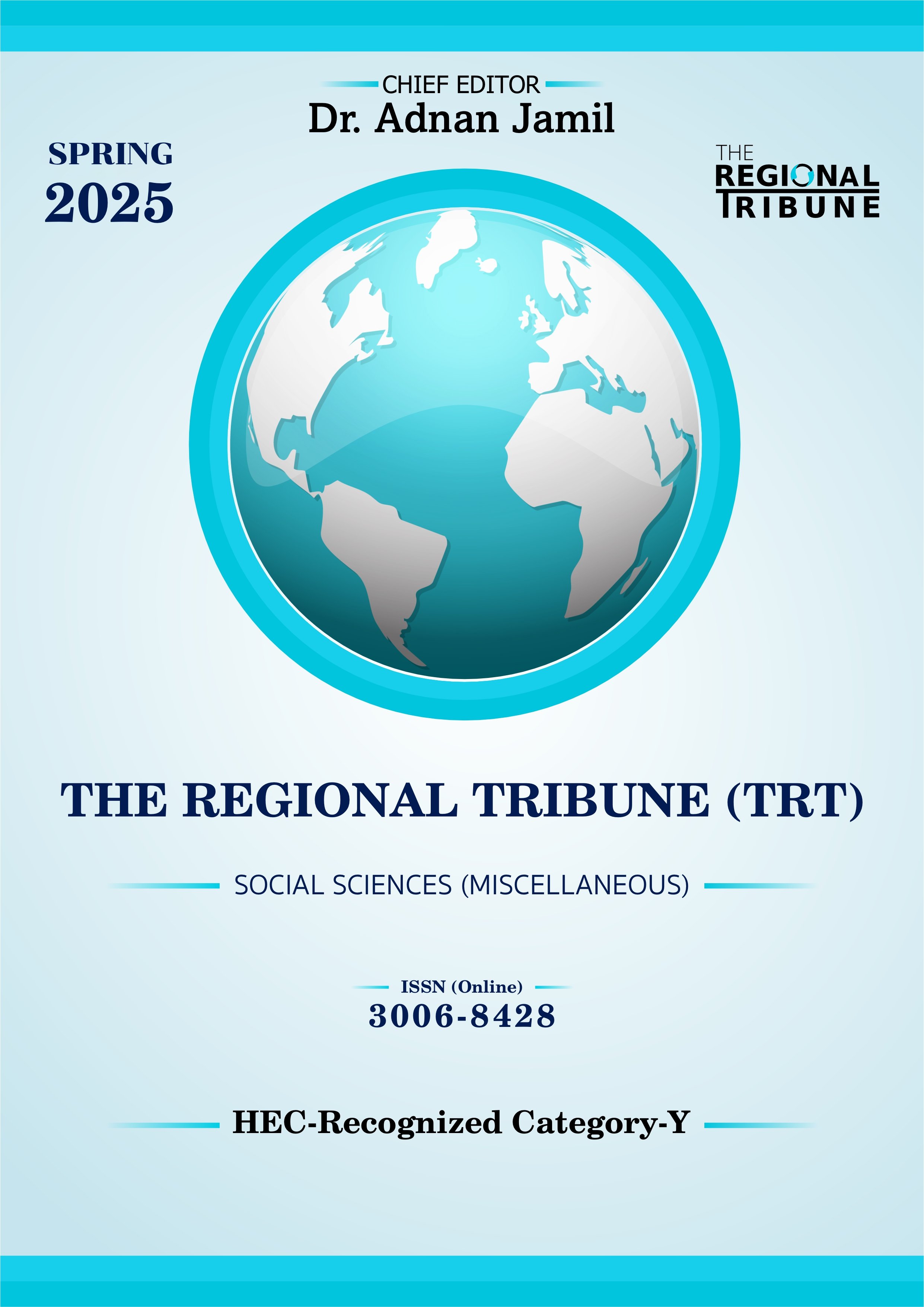Evaluating Practicality of the Volunteer Engagement Model for Emergency & Disaster Management Developed in the Context of Pakistan
DOI:
https://doi.org/10.55737/trt/SG25.100Keywords:
Volunteer Engagement, Community Emergency Response Team, Practicality Testing, Resilience, Sustainable CERT-EMS Coordination, Community Resilience, Emergency and Disaster Management ModelAbstract
Pakistan having a diversified geographic landscape, more frequently faces small and medium scale emergencies like urban flooding, road traffic accidents and residential or industrial fires than large scale catastrophic disasters. These frequently occurring emergencies cause sustained pressure on the under-resourced Emergency Management Services (EMS) of the country. In order to enhance community resilience and to address these recurring challenges, a context-specific Volunteer Engagement (VE) Model has been developed that integrates Community Emergency Response Teams (CERTs) with the EMS command structures, while addressing VE in all Phases of disaster management (DM) (Abid & Haq 2025). This study evaluates the practicality of the VE Model using a structured assessment conducted by 25 senior District Emergency Officers (DEOs) from Punjab. The model was tested against established practicality criteria and a six-dimensional framework assessing operational clarity, training feasibility, cultural relevance, coordination capacity, scalability, and resource demands. Results show that the model received an average score of 3.68 out of 4 (92%), placing it in the "very practical" category. High scores for participatory training, community engagement, and cultural alignment confirm the model's readiness for scaled implementation. The study concludes that the VE Model presents a viable framework for institutionalizing volunteerism in Pakistan by developing sustainable CERT-EMS coordination. The model integrates community capabilities with formal emergency and DM organization, hence adding to the resilience of the communities.
References
Abid, S.K., & Haq, M. A. ul. (2025). Strengthening Community Resilience: Developing Community-Based Model for Sustainable Volunteer Engagement in Emergency and Disaster Management in Pakistan. Qlantic Journal of Social Sciences, 6(2), 119-137. https://doi.org/10.55737/qjss.vi-ii.25351
Abid, S. K., Hussain, M., Raza, M., Haq, R., Naseer, R., Durrani, M., Ali, S., Mannan, A., Sajid, S. A., & Ejaz, A. (2019). Non Emergency Calls-Depression Coupling in Call Handlers of Rescue 1122 Punjab, Pakistan. Pakistan Journal of Psychological Research, 34(1), 43–55. https://doi.org/10.33824/pjpr.2019.34.1.3
Abid, S. K., Hussain, M., Rizwan-ul-Haq, H., Ali, S., Iqbal, N., Raza, M., ... & Ejaz, A. (2016). Phone caller of Punjab Emergency Service (Rescue 1122) as 1st responder: A novel paradigm. Asian journal of social sciences & humanities, 5(4), 68-76. http://www.ajssh.leena-luna.co.jp/AJSSHPDFs/Vol.5(4)/AJSSH2016(5.4-07).pdf
Abid, S. K., Rafique, N., & Raza, M. A. (2023). Leadership Styles Impacting Innovative Work Behavior with Moderating Role of Job Satisfaction. Journal of Management Sciences, 10(1), 41–56. https://doi.org/10.20547/jms.2014.2310103
Aga Khan Agency for Habitat. (2022). Annual resilience report 2022. AKAH Pakistan.
Borg, W. R., & Gall, M. D. (1989). Educational research: An introduction (5th ed.). Longman.
Campbell, B., & Shackleton, S. (2001). The organizational structures for community-based natural resources management in Southern Africa. African Studies Quarterly, 5(3), 73-86. https://journals.flvc.org/ASQ/article/view/136416
Chen, L. C., Liu, Y. C., & Chan, K. C. (2006). Integrated community-based disaster management program in Taiwan: a case study of Shang-An village. Natural hazards, 37, 209-223. https://doi.org/10.1007/s11069-005-4669-5
Community World Service Asia. (2021). Inclusive disaster risk reduction initiatives in Punjab and Sindh. Community World Service Asia. https://www.cwsa.net/resource/inclusive-disaster-risk-reduction-initiatives-in-punjab-and-sindhConcern
Cutter, S. L., Burton, C. G., & Emrich, C. T. (2010). Disaster Resilience Indicators for Benchmarking Baseline Conditions. Journal of Homeland Security and Emergency Management, 7(1). https://doi.org/10.2202/1547-7355.1732
Donaldson, L. (2001). The Contingency Theory of Organizations. Sage Publications.
Ericsson, K. A., Charness, N., Feltovich, P. J., & Hoffman, R. R. (Eds.). (2007). The Cambridge handbook of expertise and expert performance. Cambridge University Press.
FEMA. (2020). Community Emergency Response Team (CERT). Federal Emergency Management Agency. https://www.ready.gov/cert
Flin, R. (2008). Safety at the sharp end: A guide to nontechnical skills. Ashgate.
International Federation of Red Cross and Red Crescent Societies. (2020). World Disasters Report 2020: Come heat or high water – Tackling the humanitarian impacts of the climate crisis together. Geneva, Switzerland: IFRC. https://www.ifrc.org/document/world-disasters-report-2020
Islam, A., Ghosh, S., Barman, S. D., Nandy, S., & Sarkar, B. (2022). Role of in-situ and ex-situ livelihood strategies for flood risk reduction: Evidence from the Mayurakshi River Basin, India. International Journal of Disaster Risk Reduction, 70, 102775. https://doi.org/10.1016/j.ijdrr.2021.102775
Islam, K. F. (2013). Community based disaster management in Bangladesh. Khulna University Bangladesh, Dhoha.
Kapucu, N., & Garayev, V. (2011). Collaborative Decision-Making in Emergency and Disaster Management. International Journal of Public Administration, 34(6), 366–375. https://doi.org/10.1080/01900692.2011.5
Khan, F. (2022). Quantitative Risk Analysis of Fire Load and Combustible Materials in Office Workplaces in the United States. Global Regional Review, 7(2), 359-366. http://dx.doi.org/10.31703/grr.2022(VII-II).34
Mancini, J. A., & Bowen, G. L. (2009). Community resilience: A social organization theory of action and change. Pathways of human development: Explorations of change, 245-265.
Maqbool, M. Y., Hussain, S., & Khan, M. B. (2017). National framework of disaster risk management in Pakistan: Issues, challenges & policy recommendations. Abasyn J. Soc. Sci, 10, 182-192.
McLennan, J., Hayes, P., Bearman, C., Penney, G., Butler, P., & Flin, R. (2024). Training to improve emergency management decision-making: what the research literature tells us. Australian Journal of Emergency Management, 10.47389/39(No 4), 33–45. https://doi.org/10.47389/39.4.33
National Disaster Management Authority. (2021). Annual emergency report 2010–2020. Government of Pakistan.
Norris, F. H., Stevens, S. P., Pfefferbaum, B., Wyche, K. F., & Pfefferbaum, R. L. (2007). Community Resilience as a Metaphor, Theory, Set of Capacities, and Strategy for Disaster Readiness. American Journal of Community Psychology, 41(1-2), 127–150. https://doi.org/10.1007/s10464-007-9156-6
Pakistan Red Crescent Society. (2023). About PRCS volunteers. https://prcs.org.pk/
Patel, S. S., Rogers, M. B., Amlôt, R., & Rubin, G. J. (2017). What Do We Mean by “Community Resilience”? A Systematic Literature Review of How It Is Defined in the Literature. PLOS Currents Disasters, 9. https://doi.org/10.1371/currents.dis.db775aff25efc5ac4f0660ad9c9f7db2
Rozi, S., Ritonga, A. R., & Januar, J. (2021). 'Local community-based disaster management'The transformation of religious and local wisdom values in preparation to deal with natural hazards in West Sumatra, Indonesia. Jàmbá: Journal of Disaster Risk Studies, 13(1), 1-7. https://doi.org/10.4102/jamba.v13i1.1020
Simsa, R., Rameder, P., Aghamanoukjan, A., & Totter, M. (2018). Spontaneous Volunteering in Social Crises: Self-Organization and Coordination. Nonprofit and Voluntary Sector Quarterly, 48(2_suppl), 103S-122S. https://doi.org/10.1177/0899764018785472
Smit, B., & Wandel, J. (2006). Adaptation, adaptive capacity and vulnerability. Global Environmental Change, 16(3), 282–292. https://doi.org/10.1016/j.gloenvcha.2006.03.008
Whittaker, J., McLennan, B., & Handmer, J. (2015). A review of informal volunteerism in emergencies and disasters: Definition, opportunities and challenges. International Journal of Disaster Risk Reduction, 13, 358–368. https://doi.org/10.1016/j.ijdrr.2015.07.010
Downloads
Published
Issue
Section
License

This work is licensed under a Creative Commons Attribution-NonCommercial 4.0 International License.



